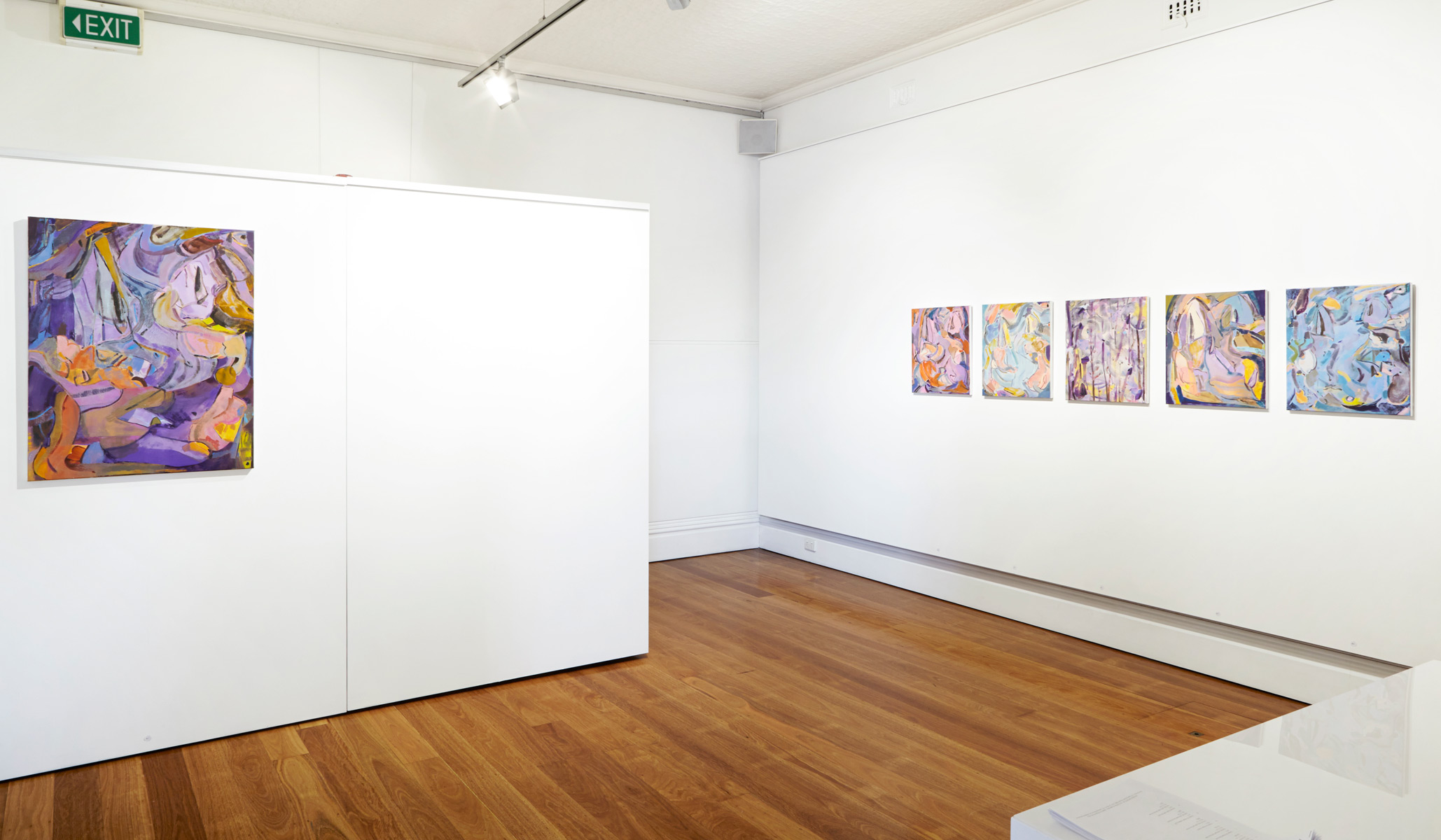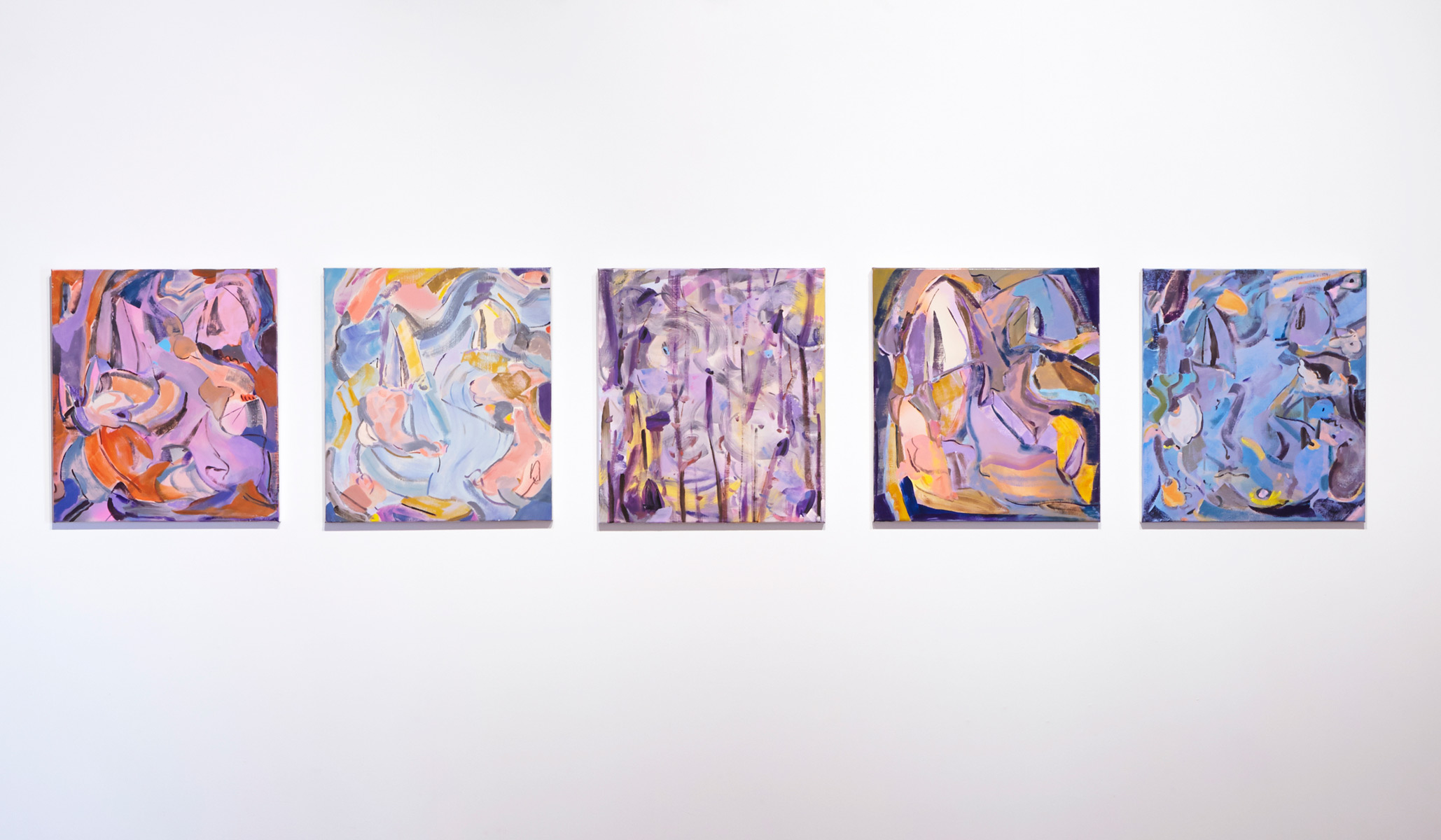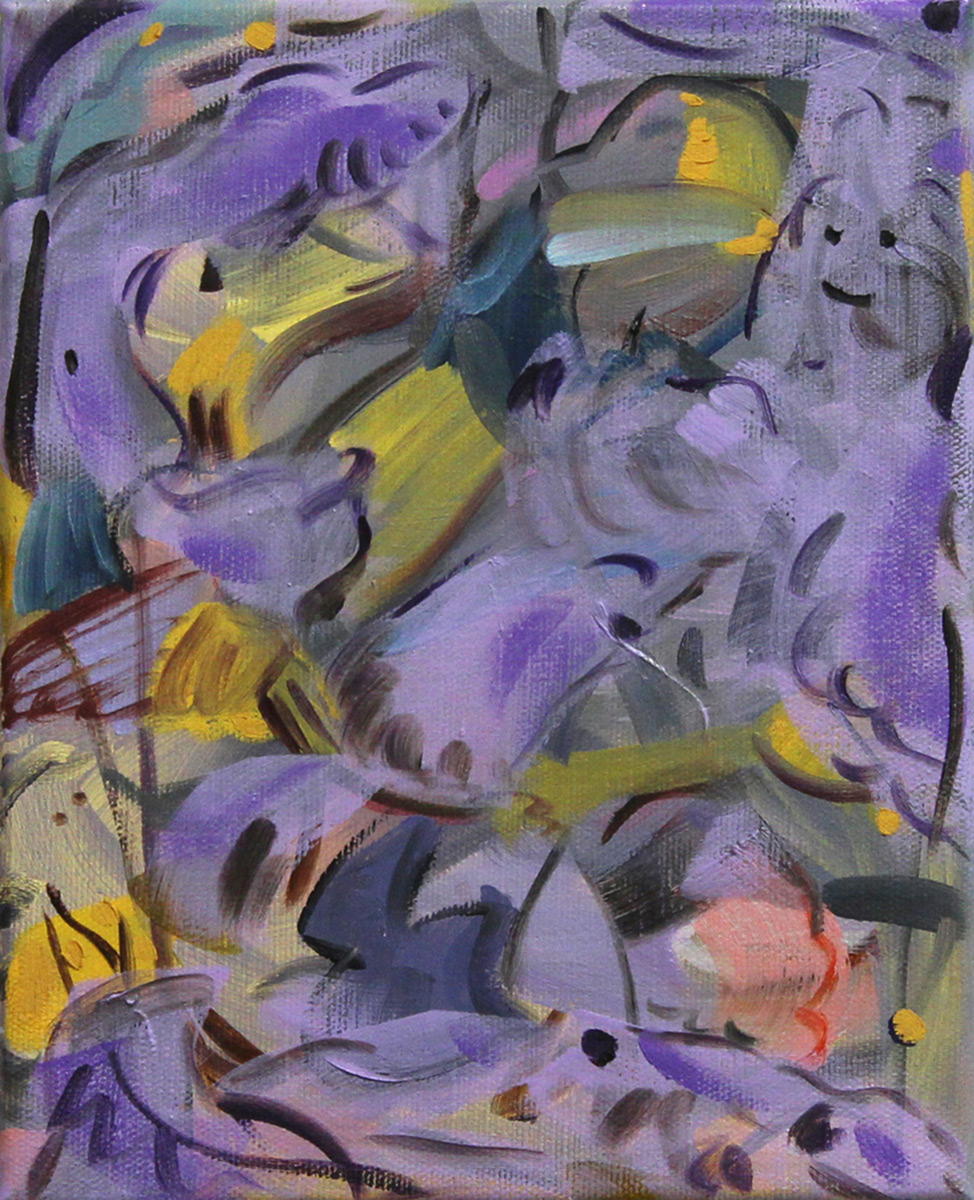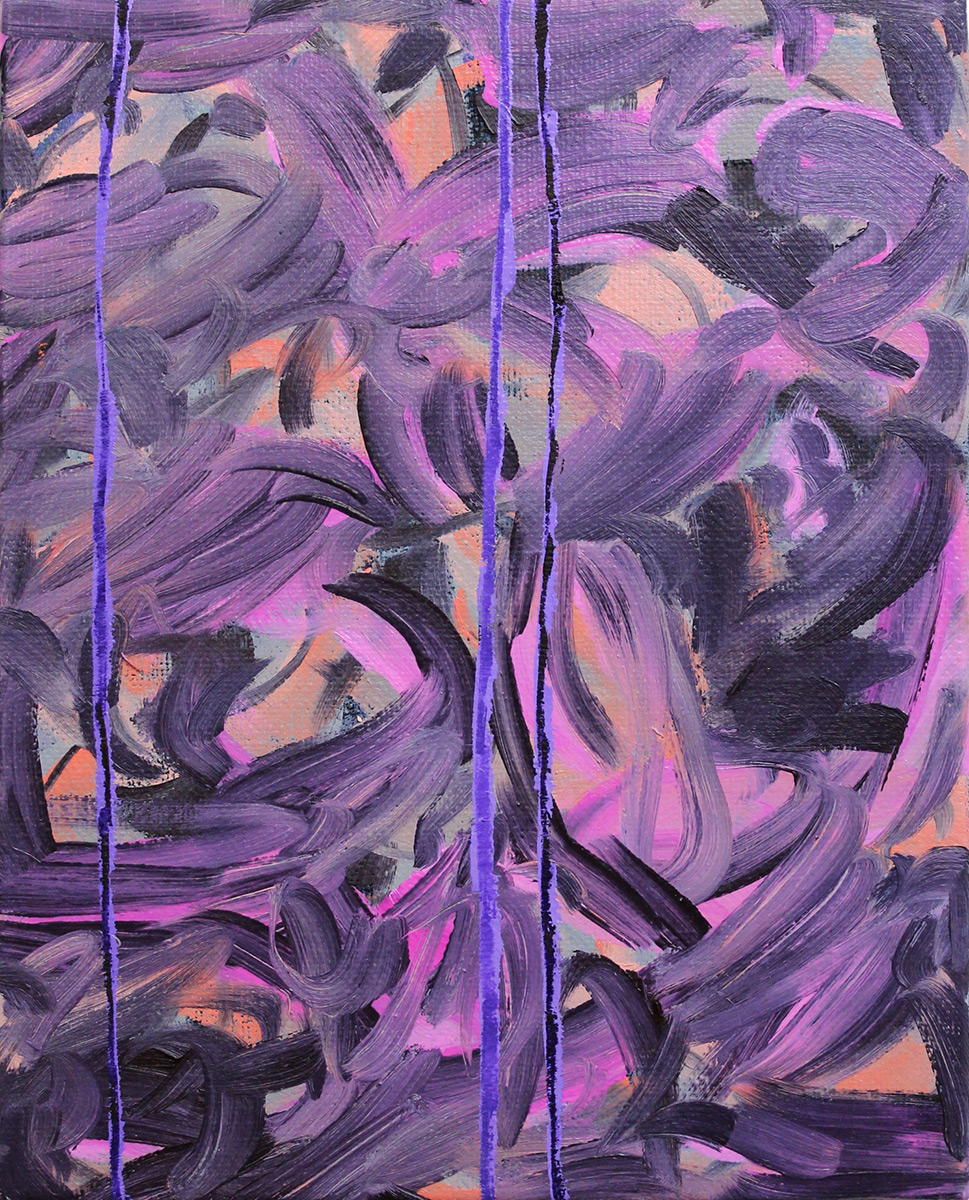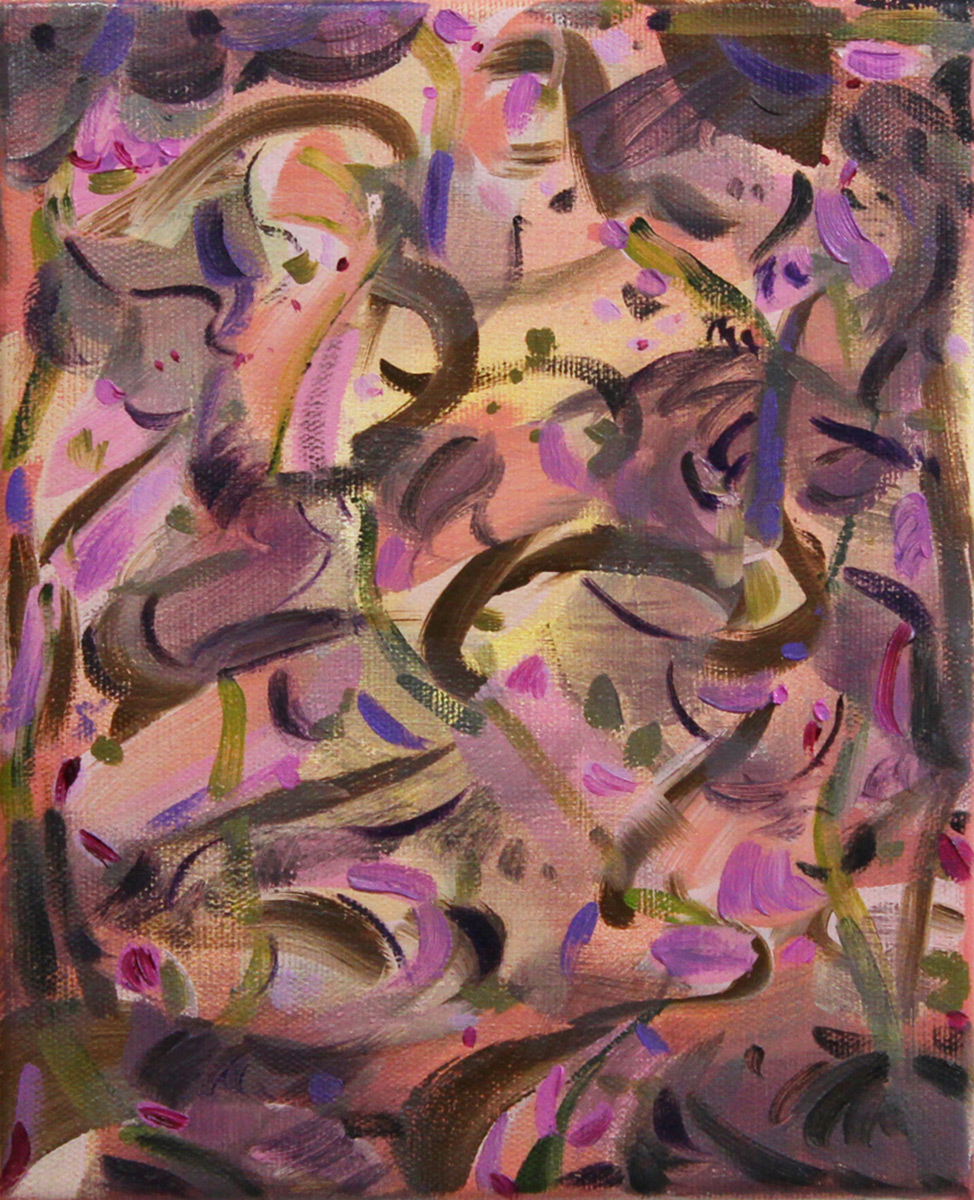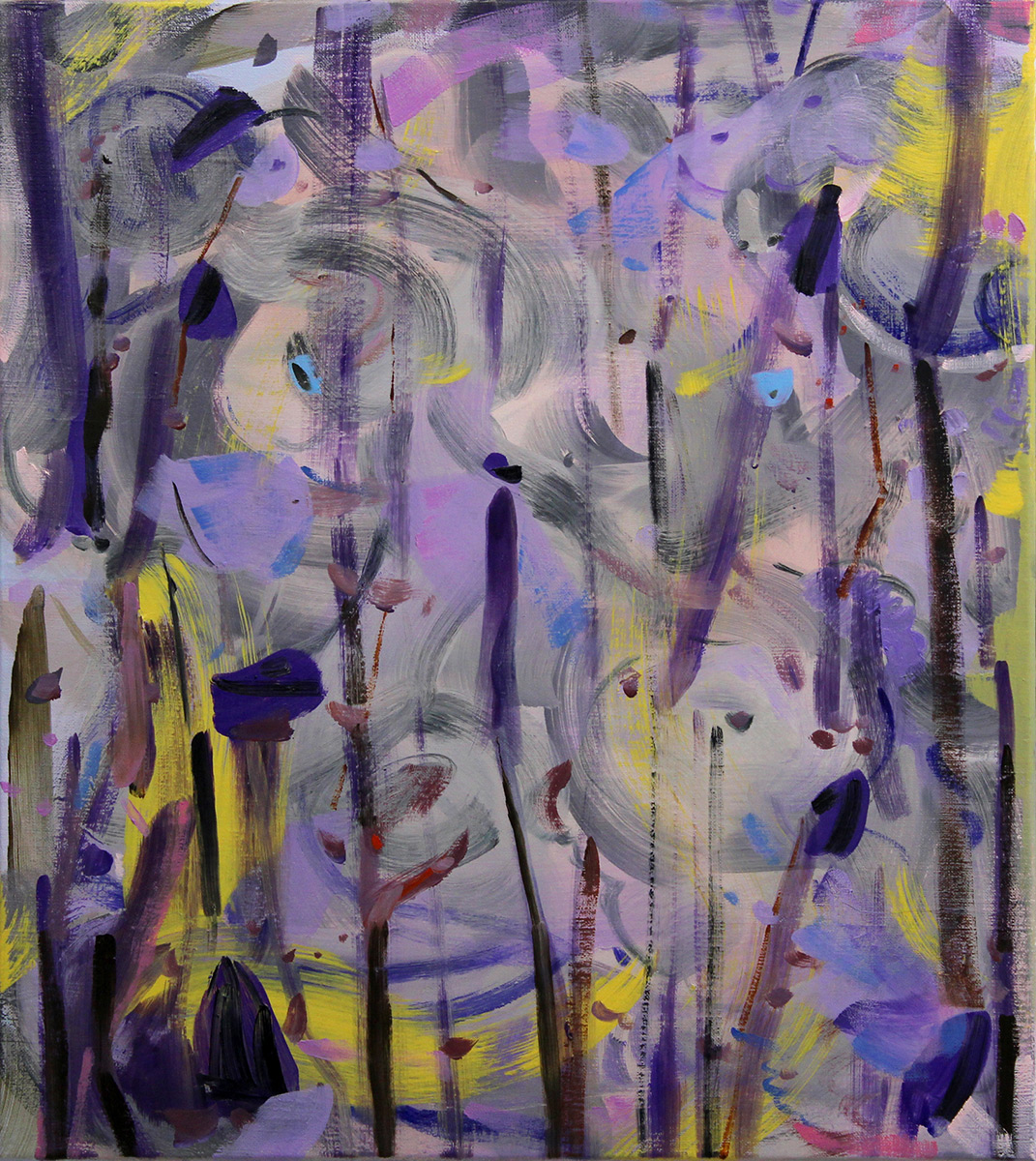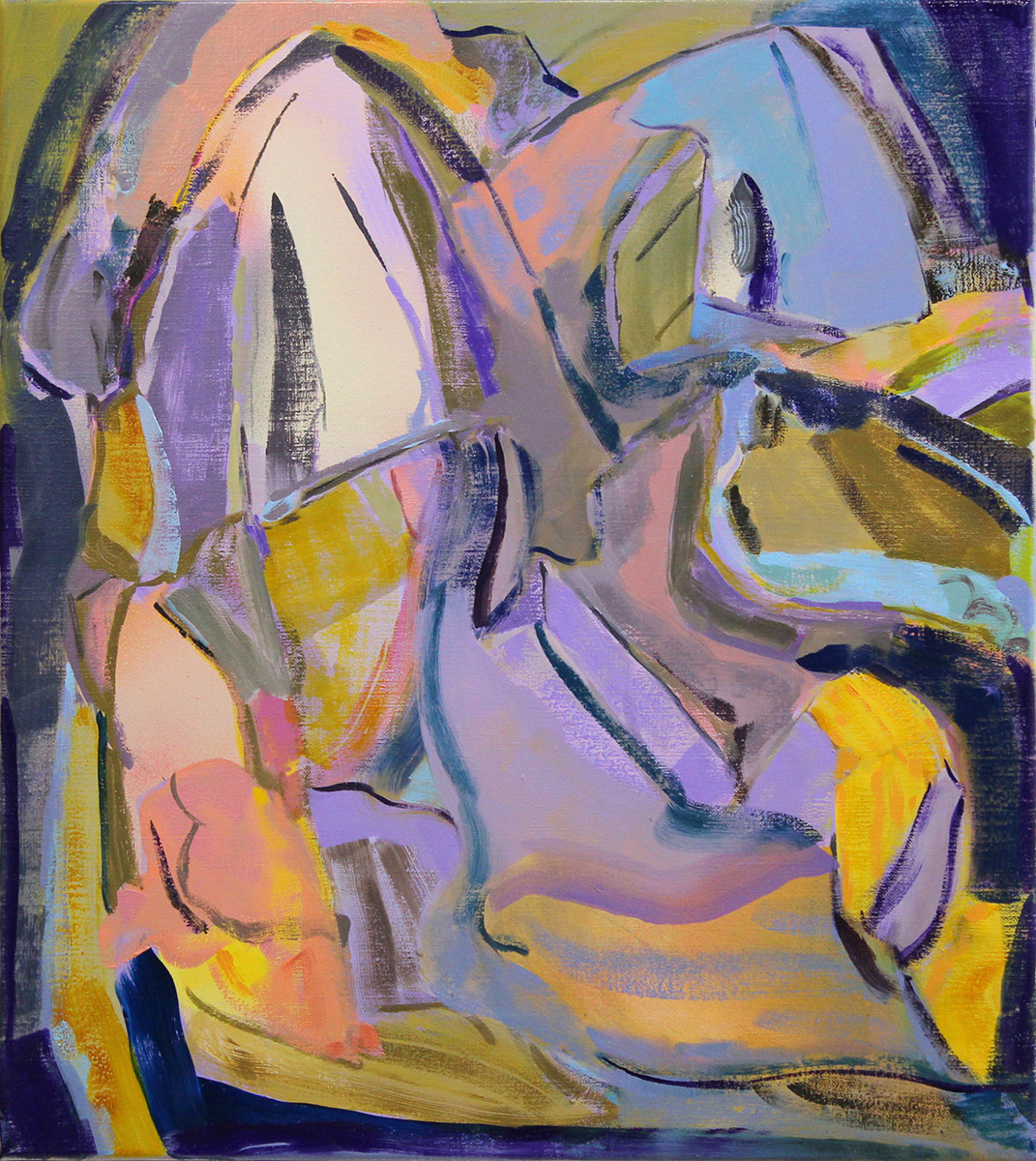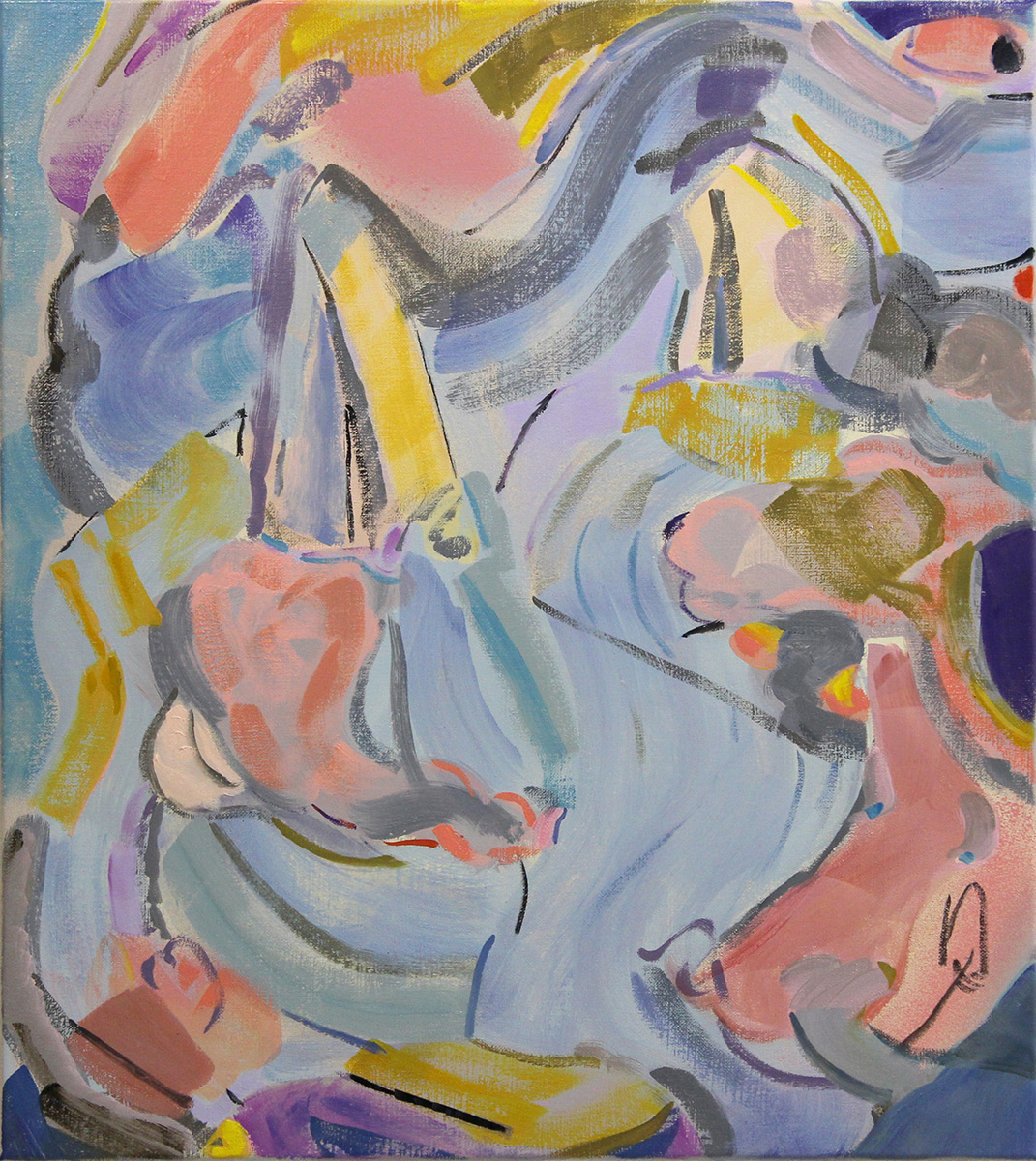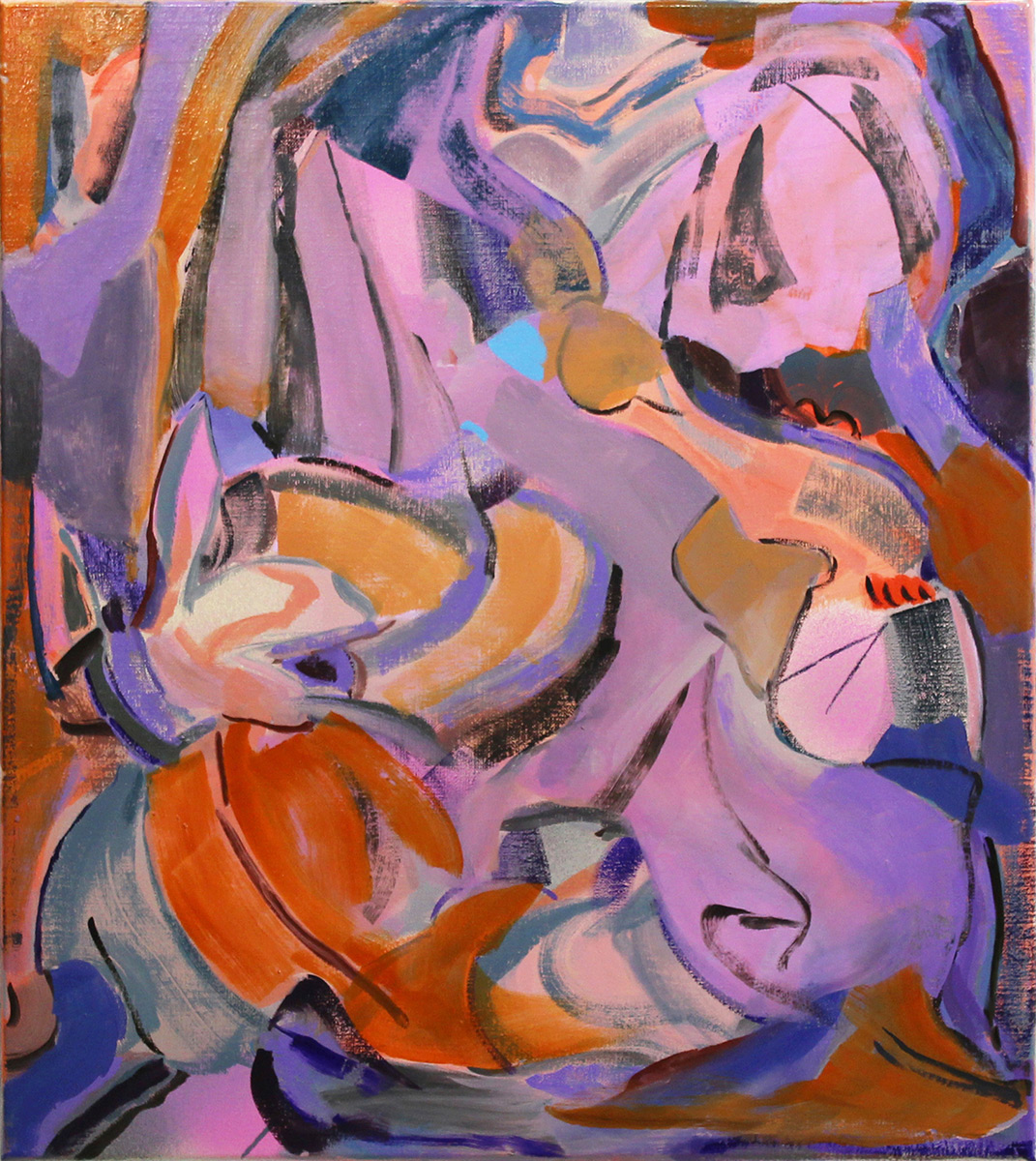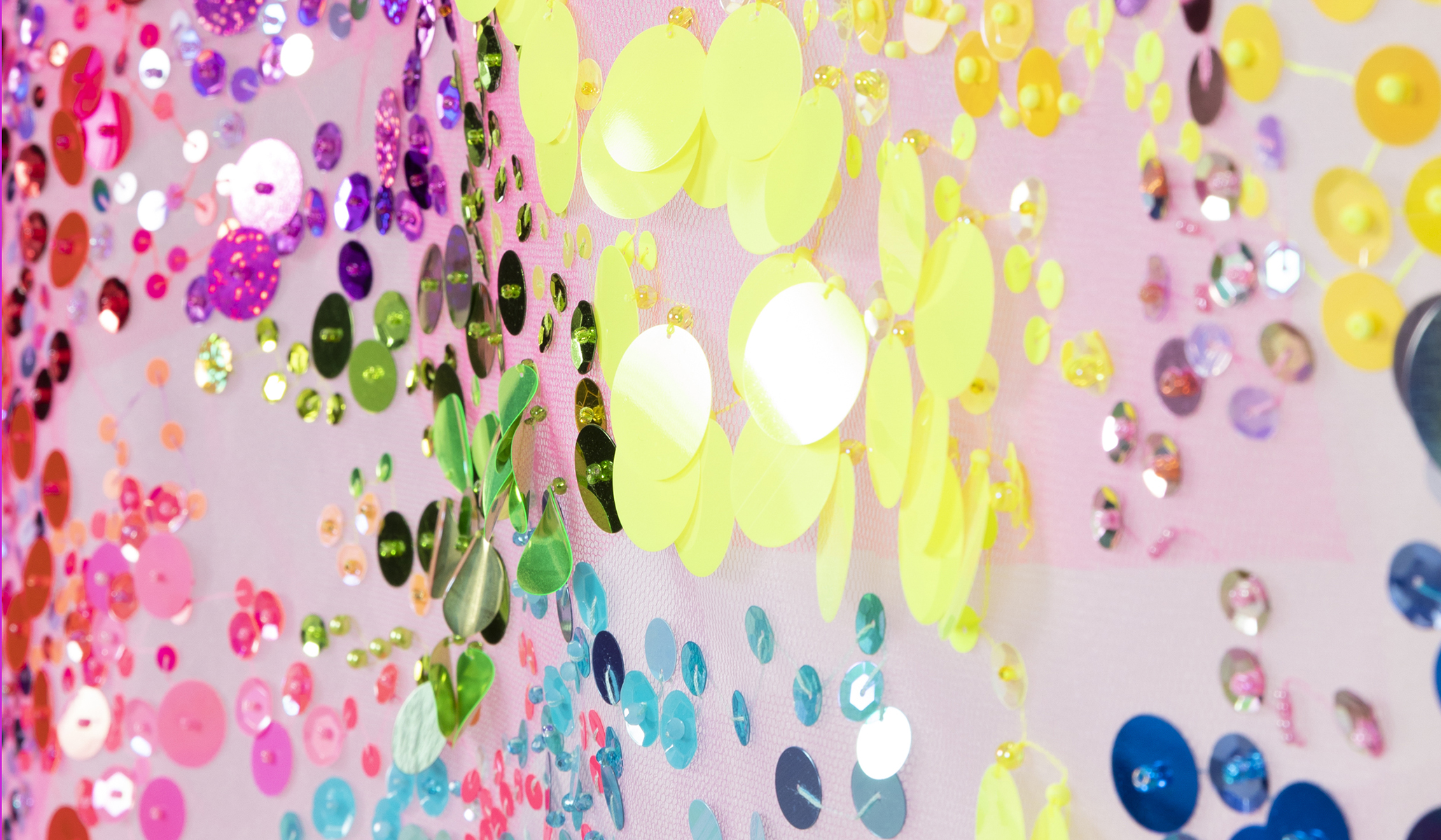Exhibition
Rarely found in nature, yet the most powerful wavelength in a rainbow, violet has long been associated with the supra-natural. In this exhibition, paintings are connected through a limited palette, with a focus on the colour violet.
At times, it is used fundamentally: at others, as a colour to oppose or complement. This formal limitation, or crux, is a vehicle to push the artist’s previous landscapes into a ‘cosmic’ periphery. While this engagement is playful, it is also an expression of the natural world as expandable and holistic.
Amid a fluid and abstracted picture plane, figuration appears and vanishes: sometimes faces, ghosts, trees and planets come into view. This openness –where elements are allowed to move in and out of the frame—engages with a perspective on contemporary practice that encourages a mercurial interaction of forms and stylistic devises. Through this process, the artist seeks to use paintings’ potentials (colourAmid a fluid and abstracted picture plane, figuration appears and vanishes: sometimes faces, ghosts, trees and planets come into view. This openness –where elements are allowed to move in and out of the frame—engages with a perspective on contemporary practice that encourages a mercurial interaction of forms and stylistic devises. Through this process, the artist seeks to use paintings’ potentials (colour, scale, perspective, representation) to conjure a space that is lofty and unbound., scale, perspective, representation) to conjure a space that is lofty and unbound.
Artist Interview
Describe your work in 100 words or less:
Flux, colour, drawing and energy are really important to me. I think about my paintings as cosmoses, or expanded landscapes, where subjects and forces are let in and out of the picture plane. At present, the work is usually quite abstract, however, there are still definite hints of figuration within the compositions: sometimes these elements arrive completely unconsciously just from the process of being physically up-close to the painting and making marks. I love the moment when you step back from the work and the image is full of unexpected forms.
Why Art?
It is changeable, independently driven and an ongoing opportunity to ask questions and explore potentials. I like that I can see my life’s work is already set out for me, that I’ll never be bored, as there are so many ways to experiment with image-making. That feeling of not knowing what the outcome will be (despite whatever planning the painting might have undergone) is a personal challenge that feels fraught and totally exciting. With painting in particular, I am really drawn to the process as a regular practice. Every time you spend time with painting, it tells you something new. It thrills you, challenges you, and lets you down, all in momentous ways. It’s a relationship.
How has your artistic practice changed over time?
My work has definitely become more abstract over time. I think I will always move between abstraction and figuration, but now I am really interested in a pictorial space where elements emerge and disappear. I have a real interest in landscape painting, and how a landscape (as something that continues outside the painting’s frame) seems to be an excellent model for an abstract all-over plane in which subject matter arrives from one direction, and then departs from another.
Previously, my work was more concerned with representing a landscape, but now I focus on how forces might be depicted using paint. I see this as a shift between landscape and a kind of cosmos: a cosmos can be a collection of different things, functioning in an interaction. This has really opened up what I include or exclude from the work. I feel less indebted to incorporating conventional landscape aspects, and more inclined to think about what fills, or inhabits, the space. Currently, I keep large lists on the studio wall that I continually add to. They are full of things to draw in (literally, energetically) to a work. Some of the things on the list are concrete (ghosts, mountains, pines, palms), while others are just intangible feelings or momentums. I usually have an energetic, or personal, feeling that drives making the image: whether or not that comes through in the finished work, it is what stimulates that particular painting in its process.
Which artistic movements do you most identify with?
I draw from lots of sources when making work. I’m attracted to the gestural and an all-over pictorial field, so Abstract Expressionists like Joan Mitchell, Jackson Pollock, Lee Krasner and Willem de Kooning have been influential. Peachy Fauvist colour. Cubist collage. I love Robert Smithson’s writings on perception and the land. Agnes Martin’s desert geometries. Philip Guston’s palette and figuration. Alex Katz’s incredible control, speed and simplicity. Matisse’s cut-outs. Although I am always working on building my own language and hieroglyphs, I am interested in painting as a really open and elastic space where lots of influences are allowed in: Laura Owens is probably my favorite contemporary painter. The Internet is a vital and affecting parallel universe that totally colours how we experience and picture things—I am really interested in that flow of information, and how we might visualise ‘natural’ space because of the Internet. The recent global interest in abstraction is something that excites me.
How do you work? Can you tell us about your process?
I paint almost every day. It’s something I feel compelled to do, even if it’s late at night—if I stop for too long, I feel lost. To make a painting, I do lots of experiments, however, these are not really studies; they usually end up being the paintings themselves. I draw and write everyday. I use my computer to change and play with images. I make references but I usually let them go pretty quickly.
On a studio day, I arrive early at about 8am and usually stay until late. I love painting in the morning because it’s quiet and fresh. Nights are wonderful too, and let new ideas in. The studio I am currently working from in Melbourne is a really great environment: there are other painters around all the time, with varied practices, so it’s very inspiring.
What themes and ideas do you pursue?
Imperfection, energy, control, intuition, colour, congestion, openness, landscape, space, poetry.
What is your dream project?
To spend time travelling, visiting galleries and painting in Canada and the USA.
Where would you like to be in 5 years?
To have deepened my practice and process so that it feels meditative, more often. To understand colour more intimately. To be in tune with the forms that recur in my work. To be writing about contemporary painting. Travelling. Showing in interesting galleries and museums, both in Australia and overseas.


